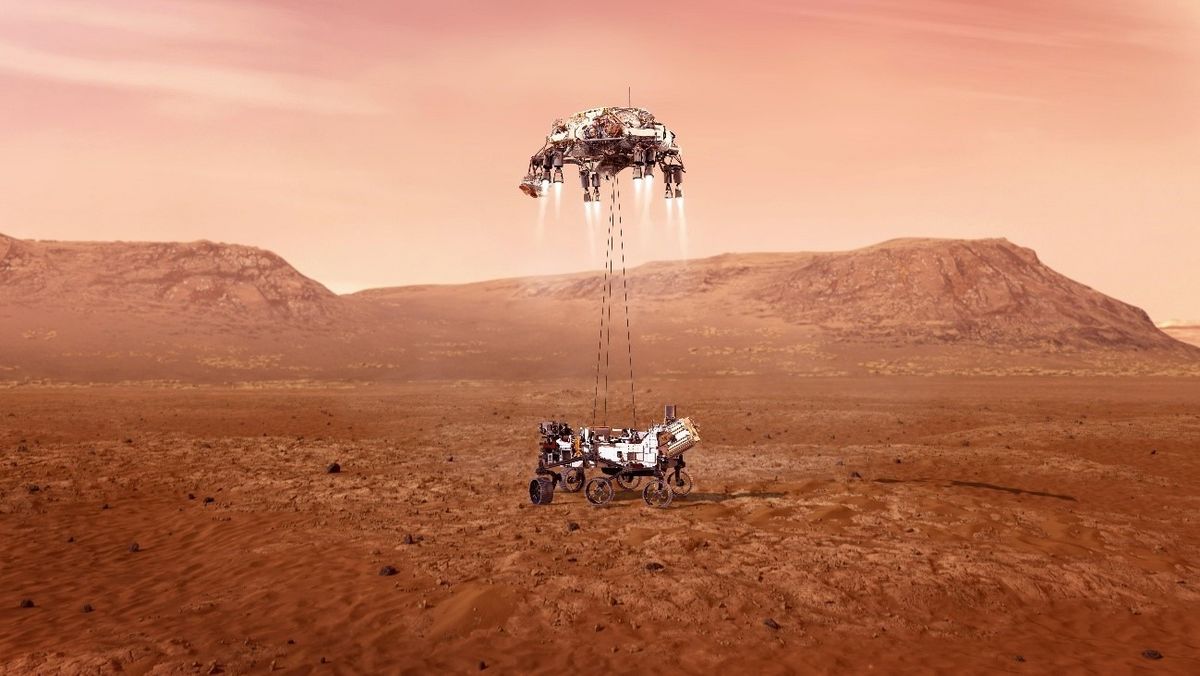The recent mission of the American Space Agency (NASA) completed 7 months, with the landing of the Perseverance rover along the Jezero crater on the Red Planet, on February 18, 2021.
The Mars 2020 Mission has as its central objectives astrobiology, geology and the search for signs of life on the planet, seeking paths for human exploration on Mars. It is the first mission to collect and store Martian rocks and regoliths. In order to gain greater knowledge of the site's geology, the mission aims to assist in the construction of a geological map of Mars. And with that, we can think, in the future, about mining on the Red Planet.
Another goal is to prepare for future human missions by experimenting with oxygen production directly on site. So it will use an instrument called Moxie, the size of a car battery, which should be able to produce up to 10g of oxygen in an hour, sucking carbon dioxide from the Martian atmosphere, like a plant.
The project cost about $2.7 billion, carrying with it a technology experiment, the Ingenuity Mars Helicopter, which performed the first powered, controlled flight on another planet. For more information, visit Mars 2020 Mission.
With this event in evidence, it is inevitable to question the possibilities that the Red Planet has to offer us. Previous missions brought several answers, and consequently, new questions arose as well. In this way, the discoveries serve as fuel for the evolution of scientific research on Mars.
Understanding the Geology of Mars
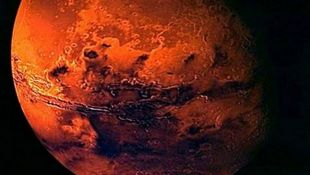
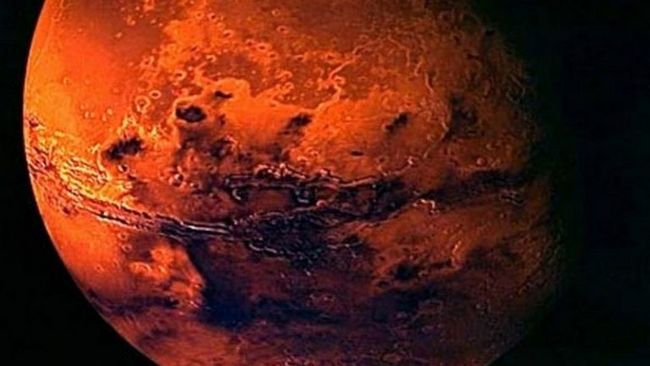


One of the mission's goals is to deepen our understanding of Mars' geology and soil. Perseverance will collect rock core samples in metal tubes, which will be carefully preserved. Future missions, scheduled for the 2030s, will then return these samples to Earth for further study.
These future NASA missions will be carried out in cooperation with the European Space Agency (ESA) , which will send spacecraft to Mars to collect these sealed samples from the surface, and then return them to Earth for in-depth analysis in laboratories around the world.
How to discover the geology of the Red Planet?
On this journey of discovery, the first geological map of Mars is coming. But what tools will Perseverance use to do this? Let us tell you!

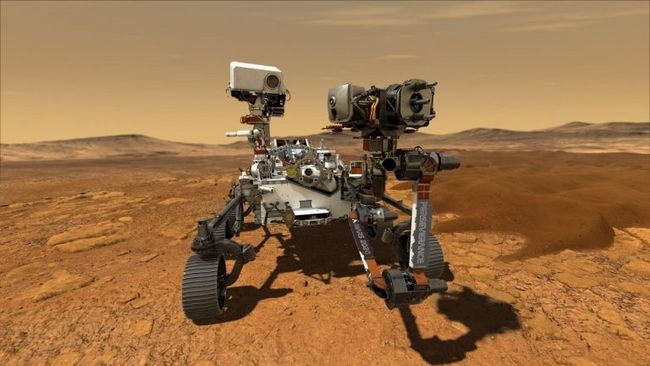


In the search for biosignatures, the set of cameras and devices contained in the rover will be essential. Understand the instruments!
- Mastcam-Z: zoom function to inspect scientifically interesting targets ;
- SuperCam : ability to fire a laser at a promising target , generating a small cloud of plasma that can be analyzed to aid in determining chemical composition ;
- Robotic Arm: When the target deserves special attention, the team can command this arm to take a closer look;
- PIXL: is a planetary instrument for X-ray lithochemistry . It will use a beam of X-rays to search for possible chemical fingerprints of past life ;
- SHERLOC (Scanning Habitable Environments with Raman & Luminescence for Organics & Chemicals): Equipped with a laser, the instrument will be able to detect concentrations of organic molecules and minerals that formed in aqueous environments. Together with PIXL, we will have high-resolution maps of elements, minerals and molecules in Martian rocks and sediments , allowing astrobiologists to assess their composition and determine the most promising cores to collect.
Evidence and the search for biosignatures
Scientists on the Mars 2020 mission are hoping to find biosignatures in Jezero . The site was a large lake 3.5 billion years ago, and even if the water has dried up, they believe biological evidence will still be in the crater. However, Ken Williford, a scientist on the project, stresses that it is important to keep an open mind.
What could be hidden on Mars?
The hope is to find a feature on the surface that correlates with biological evidence within its crystals . One structure that is reminiscent of such features on Earth is stromatolites , which are fossilized colonies of cyanobacteria. On Earth, they occur along ancient coastlines where sunlight and water are abundant . The Jezero coast, billions of years ago, is the kind of place where stromatolites could have formed, and preserved to this day.
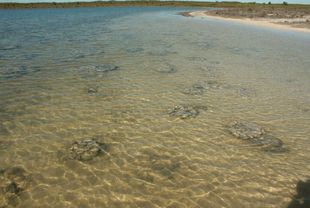
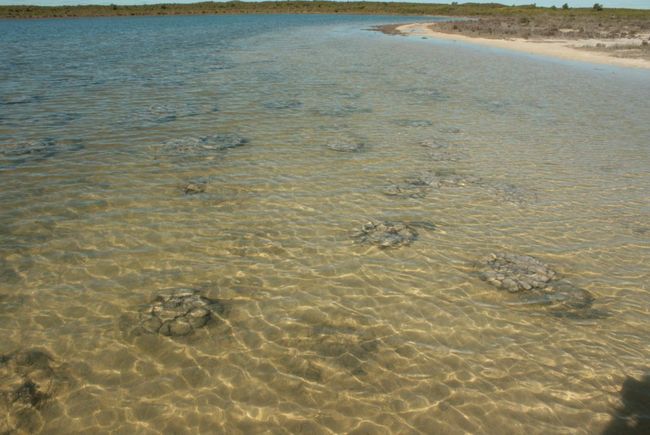


Ice Deposits on Mars
According to an article by Olhar Digital , from the beginning of February this year, NASA, the Italian Space Agency (ASI), the Canadian Space Agency (CSA) and the Japan Aerospace Exploration Agency (JAXA) announced their intention to develop a mission with the aim of detecting and studying ice deposits on Mars .
The international Mars Ice Mapper mission aims to detect the location, depth, extent and abundance of near-surface ice deposits . An orbiting radar would help identify properties of dust, loose rocky material known as regolith, and solid rock layers that could impact the ability to access the ice.
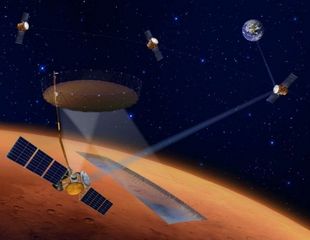
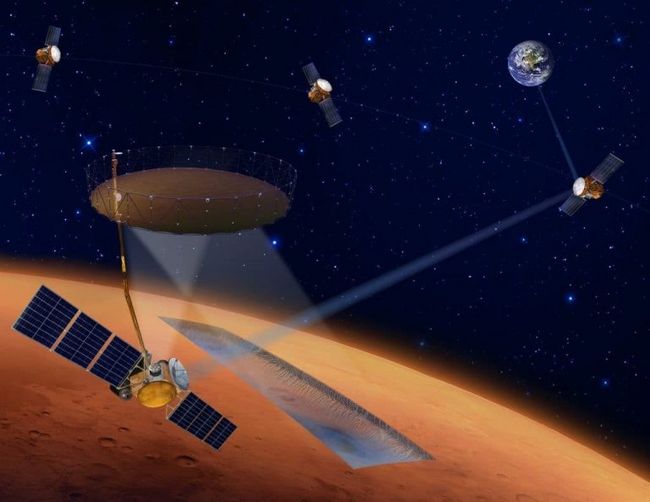


Ice on the Red Planet, in addition to being essential for survival, is also a critical natural resource that could provide hydrogen and oxygen for rocket fuel, resources to support survival, civil engineering, mining, manufacturing and, eventually, agriculture on Mars.
Mars mineral discovered in Antarctica
You may have heard of jarosite, the mineral from Mars ! It was first discovered on the Red Planet in 2004 by Opportunity. Recently, researchers found the same mineral in Antarctica , rekindling new discussions about the Martian environment.
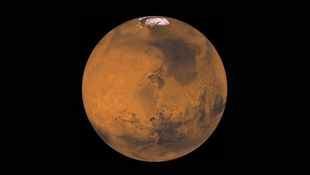
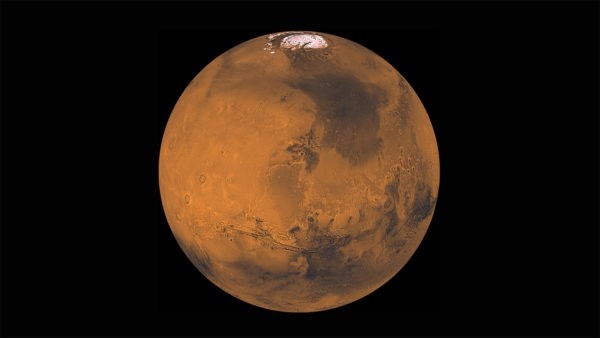


At the time it was discovered, Jarosite attracted scientific attention regarding its formation. Jarosite requires water, sulfur, potassium and acidic conditions to form , which is a rare scenario on Mars today. As a result, several investigations into the subject were conducted by the scientific community, such as the possibility that it formed from the evaporation of small amounts of acidic water, which did not seem very likely.
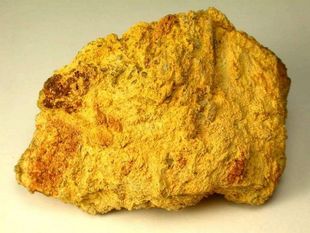
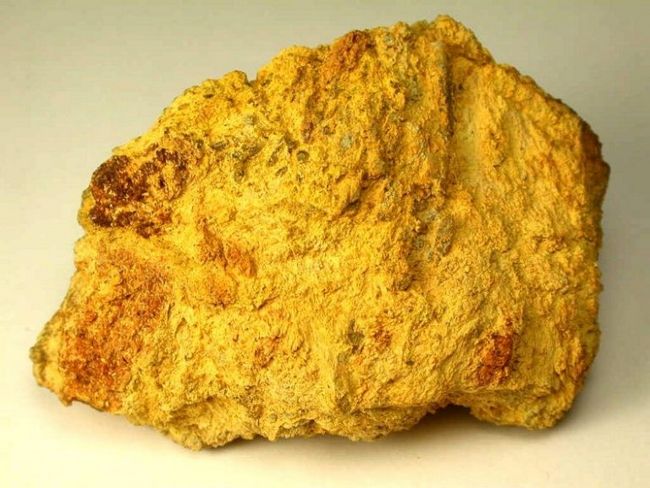


So, to introduce you to Jarosite, it is a yellowish and brownish mineral found in mining waste exposed to rain and air on Earth. A recent study, led by University of Milan-Bicocca geologist Giovanni Baccolo, has brought the subject to light with new clues about the Martian environment. Jarosite has been found in Antarctica!
Baccolo's discovery came unexpectedly when they were searching for minerals that could indicate ice age cycles. During an excavation at a depth of 1,620 meters, residues of the same mineral were found. The discovery was confirmed by measuring X-ray absorption and using electron microscopes.
Science never stops!
From this study by Baccolo, a paper was published in Nature Communications , indicating that Jarosite forms in the same way on Mars. Therefore, there is evidence that glaciers contributed to the chemical composition of Mars.
The next goals are to investigate how Martian ice may have formed other minerals. In the meantime , we await the results of the Mars 2020 mission and future missions that will return samples. Science's journey into the geology of the Red Planet is just beginning!
How about getting lost on Mars?
For those of you who enjoy a good movie and want to venture into a story on the Red Planet, here's a movie tip. The Martian is a 2015 American science fiction film. Of course, not everything is really true, after all, we are talking about a film production, but it's worth checking out!
Did you like the text? Check out other texts on the blog or contact us and see how we can help you and your company.
